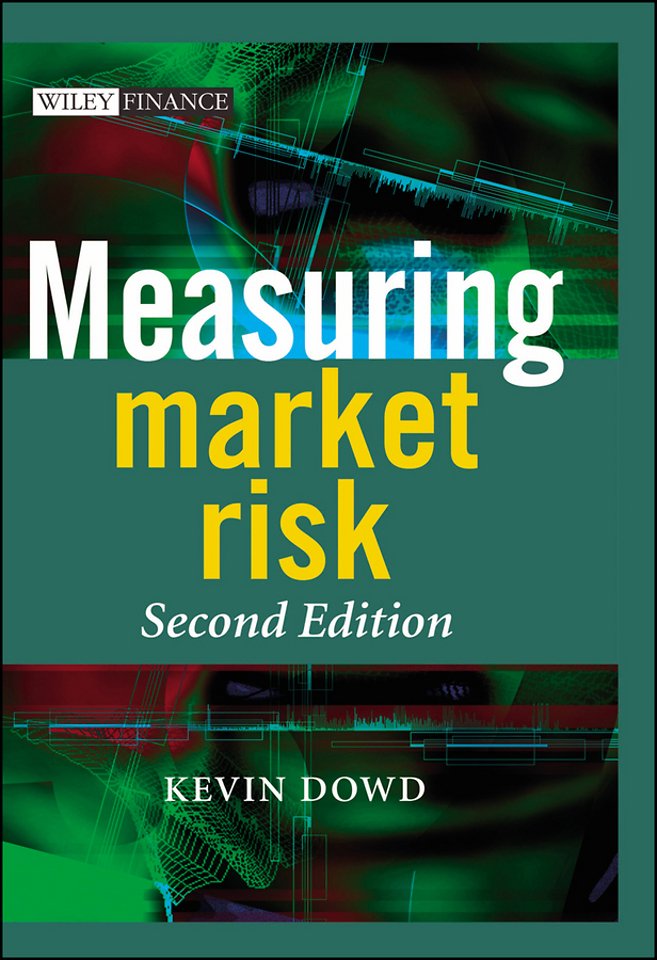Measuring market risk
second edition
Gebonden Engels 2005 2e druk 9780470013038Samenvatting
De tweede editie van 'Measuring market risk' verstrekt een uitgebreide behandeling van de state of the art in van marktrisico measurement. Het boek omvat alle aspecten van moderne marktrisico measurement en hierin worden nieuwe ontwikkelingen binnen dit onderwerp benadrukt, zoals coherente en spectrale risicomaatregelen, het gebruik van taal, nieuwe toepassingen van stochastische methodes en nieuwe ontwikkelingen op het gebied van backtesting.
'Measuring market risk' is geschreven in een duidelijke en toegankelijke stijl en omvat vele uitgewerkte voorbeelden van marktrisico measurement problemen. Er is tevens een cd-rom bijgevoegd, die Excel werkboeken bevat en een uitgebreide reeks van MATLAB risico measurement functies.
Specificaties
Lezersrecensies
Inhoudsopgave
Acknowledgements
1. The Rise of Value at Risk
1.1. Emergence of financial risk management
1.2. Market risk management
1.3. Risk management before VaR
1.4. Value at risk
Appendix 1: Types of Market Risk
2. Measures of Financial Risk
2.1. The Mean-Variance framework for measuring financial risk
2.2. Value at risk
2.3. Coherent risk measures
2.4. Conclusions
Appendix 1: Probability Functions
Appendix 2: Regulatory Uses of VaR
3. Estimating Market Risk Measures: An Introduction and Overview
3.1. Data
3.2. Estimating historical simulation VaR
3.3. Estimating parametric VaR
3.4. Estimating coherent risk measures
3.5. Estimating the standard errors of risk measure estimators
3.6. Overview
Appendix 1: Preliminary Data Analysis
Appendix 2: Numerical Integration Methods
4. Non-parametric Approaches
4.1. Compiling historical simulation data
4.2. Estimation of historical simulation VaR and ES
4.3. Estimating confidence intervals for historical simulation VaR and ES
4.4. Weighted historical simulation
4.5. Advantages and disadvantages of non-parametric methods
4.6. Conclusions
Appendix 1: Estimating Risk Measures with Order Statistics
Appendix 2: The Bootstrap
Appendix 3: Non-parametric Density Estimation
Appendix 4: Principal Components Analysis and Factor Analysis
5. Forecasting Volatilities, Covariances and Correlations
5.1. Forecasting volatilities
5.2. Forecasting covariances and correlations
5.3. Forecasting covariance matrices
Appendix 1: Modelling Dependence: Correlations and Copulas
6. Parametric Approaches (I)
6.1. Conditional vs unconditional distributions
6.2. Normal VaR and ES
6.3. The t-distribution
6.4. The lognormal distribution
6.5. Miscellaneous parametric approaches
6.6. The multivariate normal variance-covariance approach
6.7. Non-normal variance-covariance approaches
6.8. Handling multivariate return distributions with copulas
6.9. Conclusions
Appendix 1: Forecasting longer-term Risk Measures
7. Parametric Approaches (II): Extreme Value
7.1. Generalised extreme-value theory
7.2. The peaks-over-threshold approach: the generalised pareto distribution
7.3. Refinements to EV approaches
7.4. Conclusions
8. Monte Carlo Simulation Methods
8.1. Uses of monte carlo simulation
8.2. Monte carlo simulation with a single risk factor
8.3. Monte carlo simulation with multiple risk factors
8.4. Variance-reduction methods
8.5. Advantages and disadvantages of monte carlo simulation
8.6. Conclusions
9. Applications of Stochastic Risk Measurement Methods
9.1. Selecting stochastic processes
9.2. Dealing with multivariate stochastic processes
9.3. Dynamic risks
9.4. Fixed-income risks
9.5. Credit-related risks
9.6. Insurance risks
9.7. Measuring pensions risks
9.8. Conclusions
10. Estimating Options Risk Measures
10.1. Analytical and algorithmic solutions m for options VaR
10.2. Simulation approaches
10.3. Delta-gamma and related approaches
10.4. Conclusions
11. Incremental and Component Risks
11.1. Incremental VaR
11.2. Component VaR
11.3. Decomposition of coherent risk measures
12. Mapping Positions to Risk Factors
12.1. Selecting core instruments
12.2. Mapping positions and VaR estimation
13. Stress Testing
13.1. Benefits and difficulties of stress testing
13.2. Scenario analysis
13.3. Mechanical stress testing
13.4. Conclusions
14. Estimating Liquidity Risks
14.1. Liquidity and liquidity risks
14.2. Estimating liquidity-adjusted VaR
14.3. Estimating liquidity at risk (LaR)
14.4. Estimating liquidity in crises
15. Backtesting Market Risk Models
15.1. Preliminary data issues
15.2. Backtests based on frequency tests
15.3. Backtests based on tests of distribution equality
15.4. Comparing alternative models
15.5. Backtesting with alternative positions and data
15.6. Assessing the precision of backtest results
15.7. Summary and conclusions
Appendix 1: Testing Whether Two Distributions are Different
16. Model Risk
16.1. Models and model risk
16.2. Sources of model risk
16.3. Quantifying model risk
16.4. Managing model risk
16.5. Conclusions
Bibliography
Author Index
Subject Index
Anderen die dit boek kochten, kochten ook
Rubrieken
- advisering
- algemeen management
- coaching en trainen
- communicatie en media
- economie
- financieel management
- inkoop en logistiek
- internet en social media
- it-management / ict
- juridisch
- leiderschap
- marketing
- mens en maatschappij
- non-profit
- ondernemen
- organisatiekunde
- personal finance
- personeelsmanagement
- persoonlijke effectiviteit
- projectmanagement
- psychologie
- reclame en verkoop
- strategisch management
- verandermanagement
- werk en loopbaan







